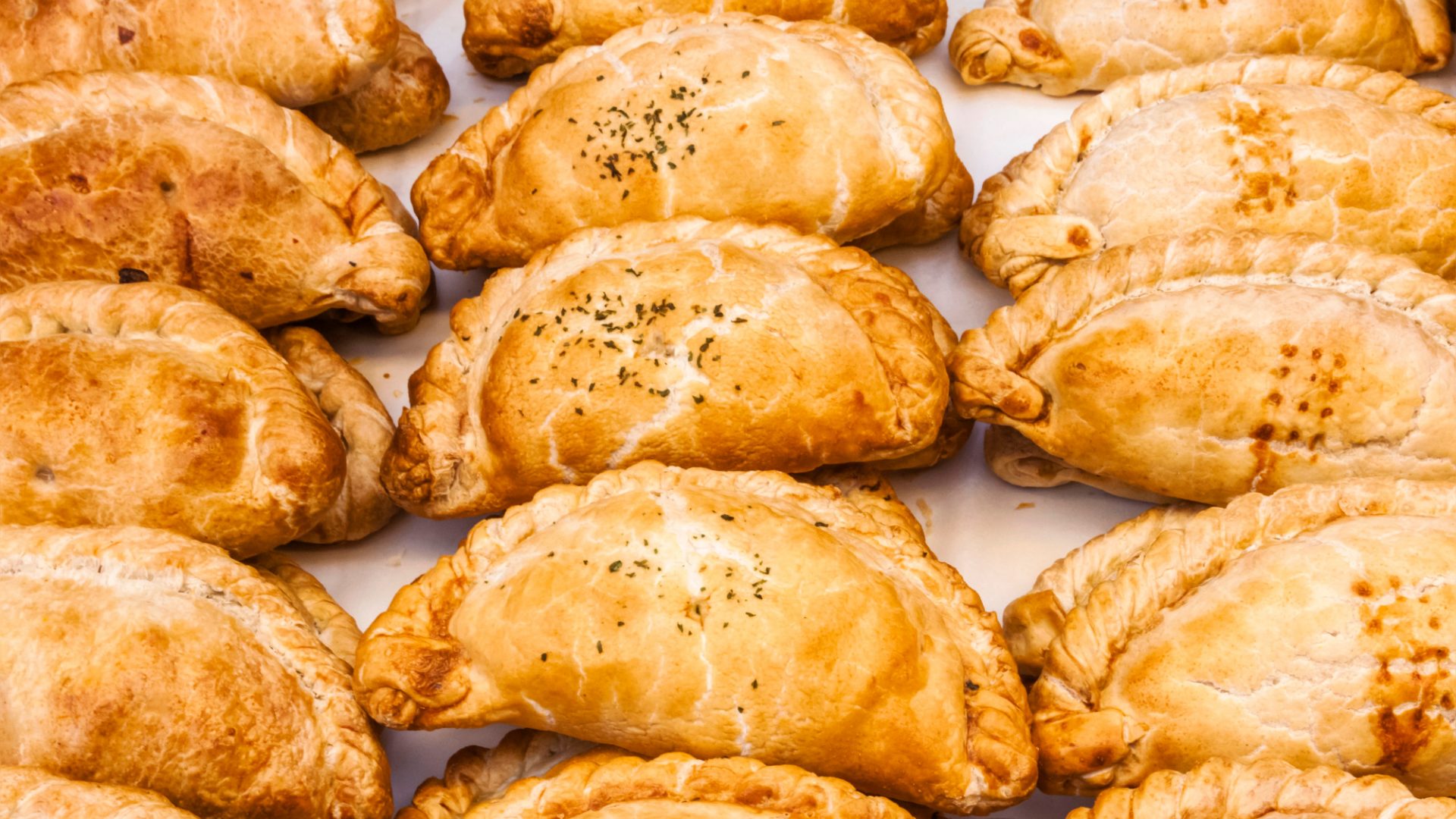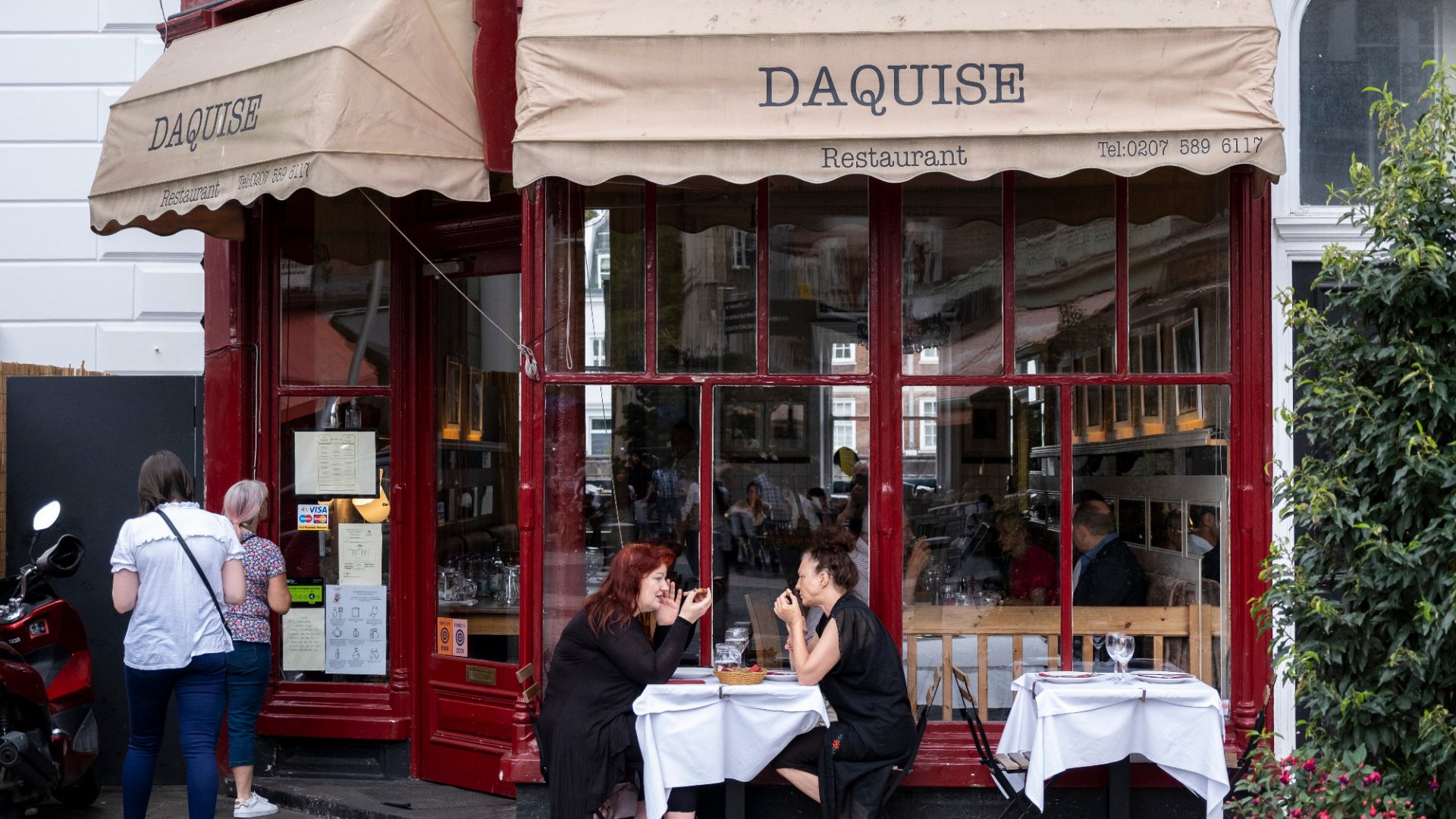On the ground floor of an old cottage in Newlyn, Cornwall, is Aunty May’s pasty shop. Outside, framed in classic quartz from Penlee Quarry, is a striking blue frontage, square stained glass at the top of the display, and vast windows below, which, in winter, steam up as hot pasties rest.
You can’t really miss Aunty May’s. Most will see it as they drive into Newlyn from Penzance, the sea and swaying palm trees to the left, bed and breakfasts, large houses and Jelbert’s ice cream shop – owned by champion rower Helen Glover’s family – to the right. If you reach the harbour, one of the most important fishing economies in the country and the largest fishing port in the South West, you’ve gone too far.
There is much to say about Newlyn. Alongside Mousehole and Paul (a village, not a man) it was the last stronghold of the Cornish language; it is home to those tins of “Cornish sardines” (see: pilchards), which come in sleek tins adorned with rustic fishing imagery, and which you find in Waitrose; and its fishing fleet, striking in shades of blue, red, green and white, bob on turquoise seas in what is surely one of the most beautiful harbours in the world, its stone walls a soothing hug reaching out into what soon becomes the Atlantic.
There are also the artists (Sir Terry Frost lived here), the pubs – some, with absurd drinking hours governed by the uncommon working day of fishermen and women – and a long list of chefs and food producers, cooking fillets of hake and packing crab meat so that we might put it on crumpets. A word here for Argoe, a shack-like restaurant on the edge of the port, where fish is cooked expertly. It deserves a far grander reputation.
At Aunty May’s, it is just Cornish pasties: hunks of beef skirt, onion, swede, potato and salt and pepper entombed in the butteriest of flaky pastry. They are as they should be, as they were designed to be: generous, calorific lunches for working miners toiling for much of the day. Pasties such as these were their respite and a means by which to carry on.
When open, Aunty May’s sells pasties until “they’re gone”. In peak season, hundreds can go at lunchtime alone. Sue Perkins used to visit when she lived nearby.
And here’s my favourite thing: as you enter the shop, there is a picture on a blackboard of a bearded pirate tucking into what is probably the country’s biggest pastry item on sale, the “Hungryman’s Pasty”. At least it might be the largest that isn’t just a novelty for Instagram, or some boring eating challenge where a TikToker called “Big Richard” sets about eating something so unfathomably large but fails and ends up wetting himself in his Audi A3 afterwards.
Back to business. The Hungryman’s Pasty is a bit of a mystery: few know its exact size – a medium Cornish pasty is about 7.5 inches long – and it isn’t always available. I can tell you that the Cornish Pirates rugby team are fans. So too those who swim long stretches of Mounty’s Bay, choppy or calm, to such effort that they require the soothing properties of beef in hot pastry. I am a fan too, even if I don’t play professional rugby or swim very far.
But whatever size the Cornish pasty might be, medium, large or Hungryman’s (I really don’t think small pasties work: the filling to pastry ratio is always off however skilled the composition and making) I have never had one better than at Aunty May’s.
Everyone who lives or regularly visits west Cornwall has their own favourite. The chef Dorian Janmaat, from Ardor in St Ives, loves the St Ives Bakery. A lot of people trust in Philps, and any who have been will trumpet Ann’s pasties at the foot of the Lizard (an area of west Cornwall that juts out to the south). Anyone who isn’t a local councillor would probably tell you Warren’s isn’t really worth going to.
For me, it is Aunty May’s, where unexpected elegance meets the roughest foods, where the flavours are rich and strong, and where the grandest pasties are found.




